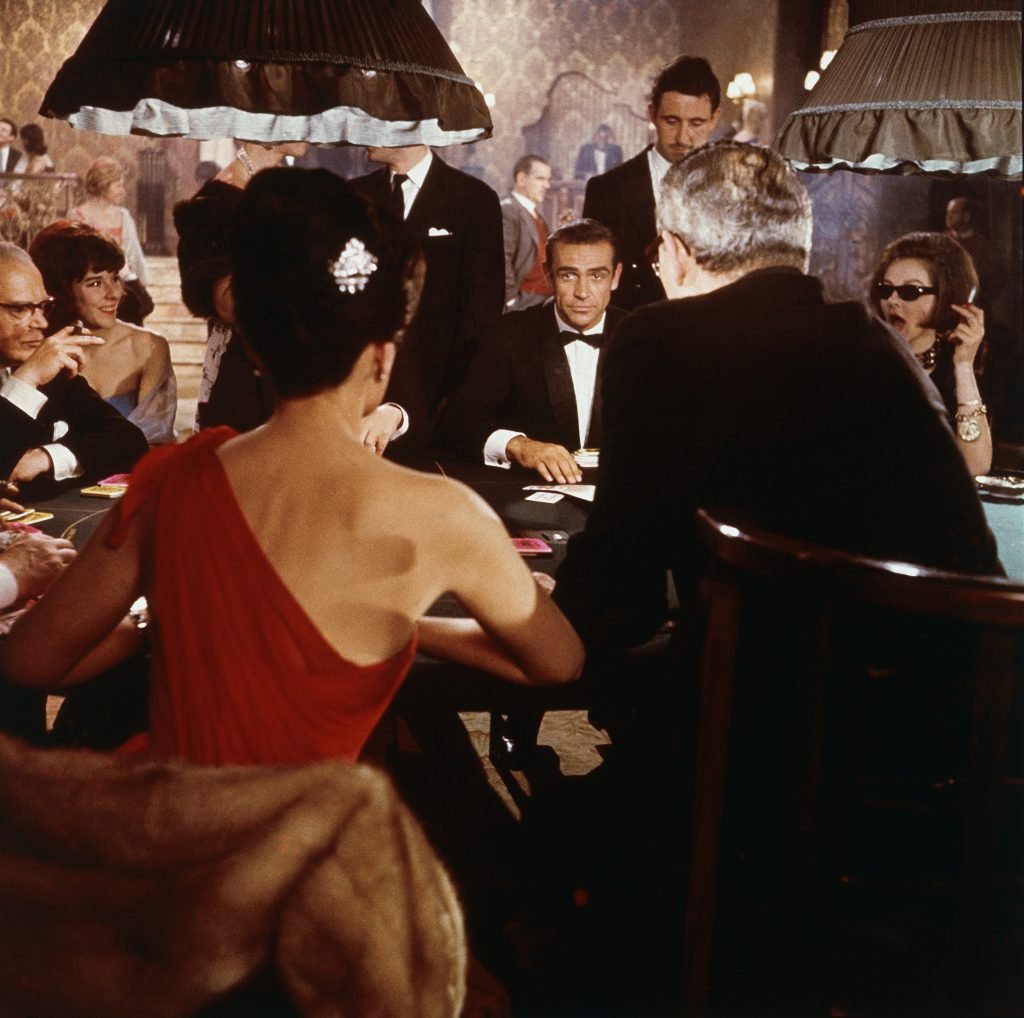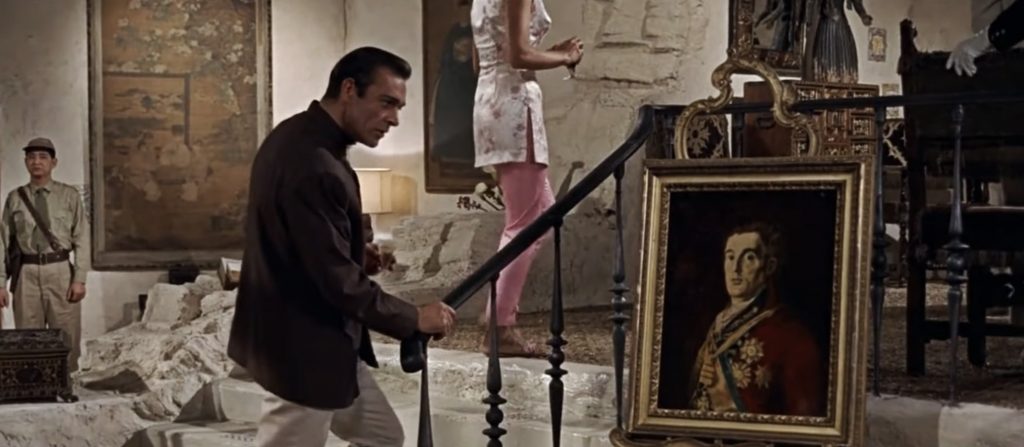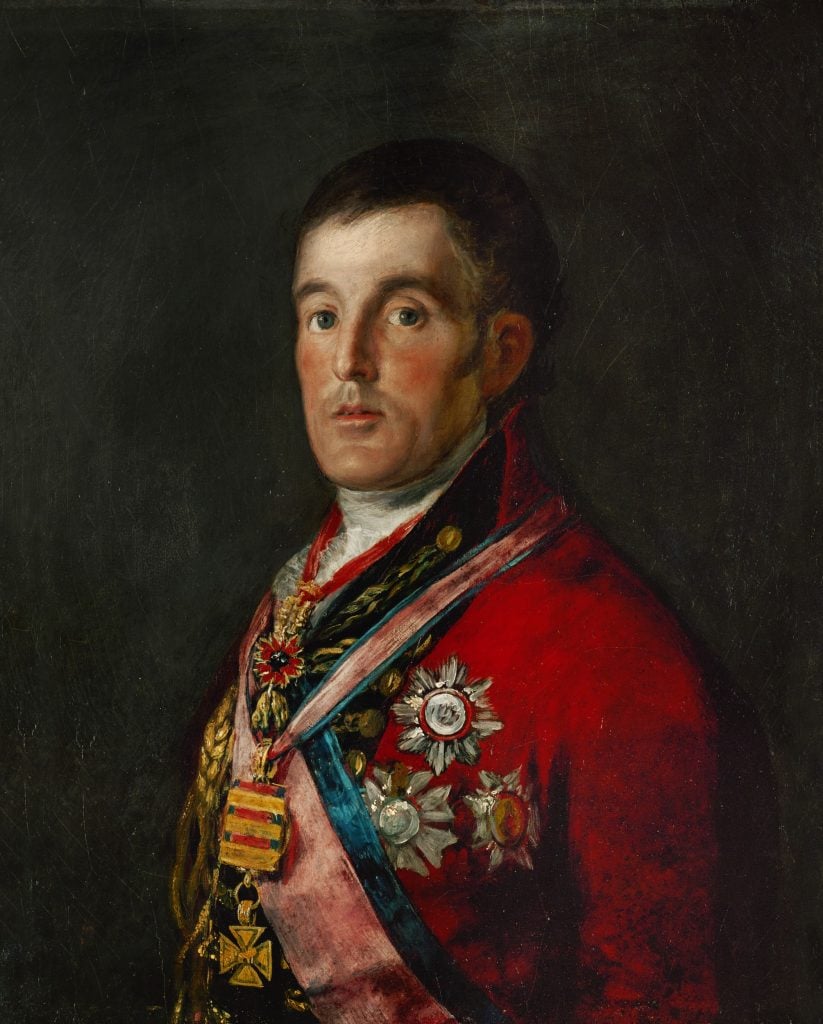Pop Culture
As Seen on ‘Dr. No’: How a Stolen Goya Portrait Ended Up in a Villain’s Lair
A replica of a painting stolen from London’s National Gallery makes an appearance in the 007 film.

A replica of a painting stolen from London’s National Gallery makes an appearance in the 007 film.

Brian Boucher

The first film of the storied James Bond franchise, 1962’s Dr. No, introduced Sean Connery as the English super-spy, premiered the iconic theme music, and was a financial success. While audiences loved its tongue-in-cheek portrayal of a womanizing spy with the unforgettable self-introduction: “Bond… James Bond,” art lovers appreciated all the more for its sly nod to a notorious art crime.
Directed by Terence Young (who would go on to direct two more Bond films), Dr. No also featured Ursula Andress as Honey Ryder, a local shell diver in Jamaica, where Bond goes to investigate the disappearance of a fellow British agent. Joseph Wiseman plays the arch-villain Dr. Julius No, who is planning to foil an American space launch from his underground lair with the aid of a radio beam weapon.
When invited to dine with Dr. No, 007 walks by a painting standing on an easel. He does a dramatic double take before glancing at Dr. No, seemingly impressed. The painting is Francisco Goya’s Portrait of the Duke of Wellington (1812–14), a half-length portrait showing the decorated British general in a trademark red coat.

Sean Connery as James Bond in Dr. No (1962), noticing the stolen painting in Dr. No’s underground lair. Photo: Screen grab / Eon Productions.
While it might just look like a generic old master portrait to many viewers today, plenty of Brits would have recognized it at the time of the film’s release. This was a replica of a celebrated Goya portrait that had been stolen from the National Gallery in London the previous year, and was still missing at the time. Therefore, it appeared as though the fictitious character was the one behind the theft of a real-world painting.
The canvas had fetched some £140,000 at Sotheby’s, when a foundation and the British government joined forces to outbid New York collector Charles Wrightsman to buy the portrait for London’s National Gallery. It went on view on August 2, 1961, but just 19 days later, bus driver Kempton Bunton would make off with it, keeping the painting for some four years before contacting a newspaper and returning the painting at a train station’s lost-and-found office. The story got its own cinematic treatment in the 2020 film The Duke, starring Jim Broadbent and Helen Mirren.

Francisco Goya, The Duke of Wellington (1812–14). Photo: Imagno/Getty Images.
“I didn’t see any reason why Dr. No shouldn’t have good taste,” production designer Ken Adam would later say. “We thought it would be fun for him to have some stolen art so we used Goya’s Portrait of the Duke of Wellington, which was still missing at the time. I got hold of a slide from the National Gallery—this was on the Friday, shooting began on the Monday—and I painted a Goya over the weekend. It was pretty good so they used it for publicity purposes but, just like the real one, it got stolen while it was on display.”